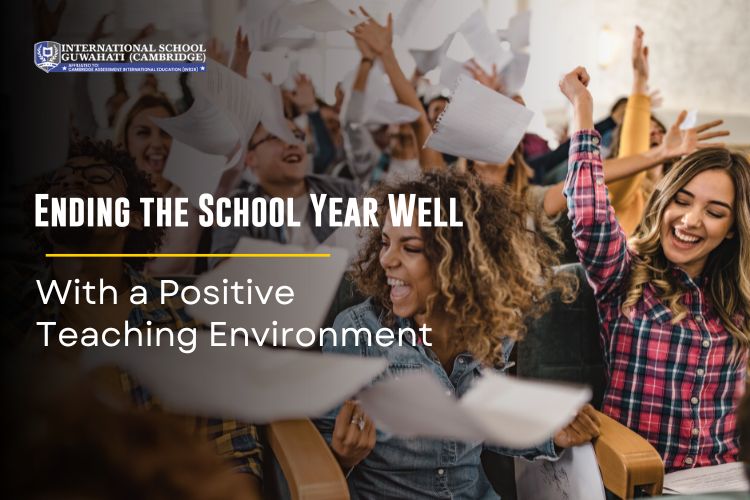![]()
People often say that school serves as a second home, with the first being your parents. As we approach the end of the school year, it can trigger a wide range of emotions in both students and teachers. While many of us eagerly anticipate the freedom and relaxation that summer promises, it’s important to remember that some students face a different reality. For those with unstable home lives, the end of the school year means losing the routine, structure, and reliable adult presence they’ve come to depend on. Whether it’s a school graduation or just a class transition, a healthy school fosters a healthy teaching and learning environment. To help all students transition into the summer months more smoothly, here are a few strategies to follow.
Leave A Lasting Legacy
One effective approach is to empower students to leave a lasting legacy, whether they are moving up to another building or simply progressing to the next grade. Planning a culminating event, such as a legacy project, can be a meaningful way to achieve this the goal is to leave a lasting imprint within the school community. It’s a reminder to students that they will forever be a part of your class or school family.
Gather Feedback

Asking students to complete a course evaluation at the end of the school year can be nerve-wracking. The fear of receiving harsh feedback can make us apprehensive. However, seeking feedback from students is crucial. We always strive to understand their perspective and their experience in our class.
When crafting course evaluations, we can formulate questions that encourage more constructive feedback. For example, instead of asking, “What was the most frustrating part of this class?” we can inquire, “What challenged your thinking the most in this class? Using multiple-choice questions and collecting responses through a Google Form can simplify the process of handling substantial data. This way, we ensure we receive valuable insights from our students.
Celebrate Reading
If your classroom centers around any form of independent reading, it becomes essential to celebrate progress at the end of the year. This celebration not only recognizes the students’ achievements but also fosters a sense of community. You can help students reflect on various aspects of their reading journey, such as reading volume, reading diet, reading identity, and reading stamina.
As a class, you can assess how many books were read collectively and how many different genres students explored. It’s a collaborative effort that brings the class closer together.
Allocate time for students to share book recommendations and reflect on their growth as readers. While not every student may read more books than the previous year, each year provides an opportunity to set new teaching and learning goals. Students can consider if they:
- Explored new genres during the year.
- Extended the duration of their reading sessions.
- Enhanced their reading skills.
- Began recommending books to their peers.
- Diversified their reading locations.
- Gained a deeper appreciation for reading as a lifelong hobby.
Play Review Games
To engage students, we can include a range of review games in our lesson plans. Whether we use them for spiral reviews, as activities for fast-finishers, or activities for first day of class, or within learning stations, games infuse learning with fun and laughter. They offer a meaningful way to conclude the school year. With students actively participating in interactive games, it doesn’t feel like work, and time flies by.
Map Your Year

When students map their learning journey for the year, they engage in activities for first day of class like synthesis, making connections, asking questions, visualization, summarization, and evaluation of their learning experiences. This thoughtful process naturally paves the way for setting goals for the upcoming year. Therefore, teaching and learning environment in a year mapping proves to be an incredibly potent tool for collaboration, even though it can also be undertaken individually. Students have ample opportunities to express their preferences and decisions regarding the content and organization of their maps. Moreover, different methods of teaching will determine different Maps.
Wind Up
The end of the school year brings a whirlwind of emotions to students and teachers alike. While many eagerly anticipate the freedom of summer, it’s crucial to acknowledge and support those students who face instability in their home lives during this time. To deal with this the strategies presented in a teaching and learning environment are – leaving a lasting legacy, gathering feedback, celebrating reading, playing review games, and mapping the year with primary teachers – offer valuable ways to ensure a smooth transition into the summer months for all students. These approaches help build a strong sense of community, empower students to reflect on their experiences, and set meaningful goals for the future of their educational journey.
Also Read: How to Take Care of Children’s Mental Health in School?










